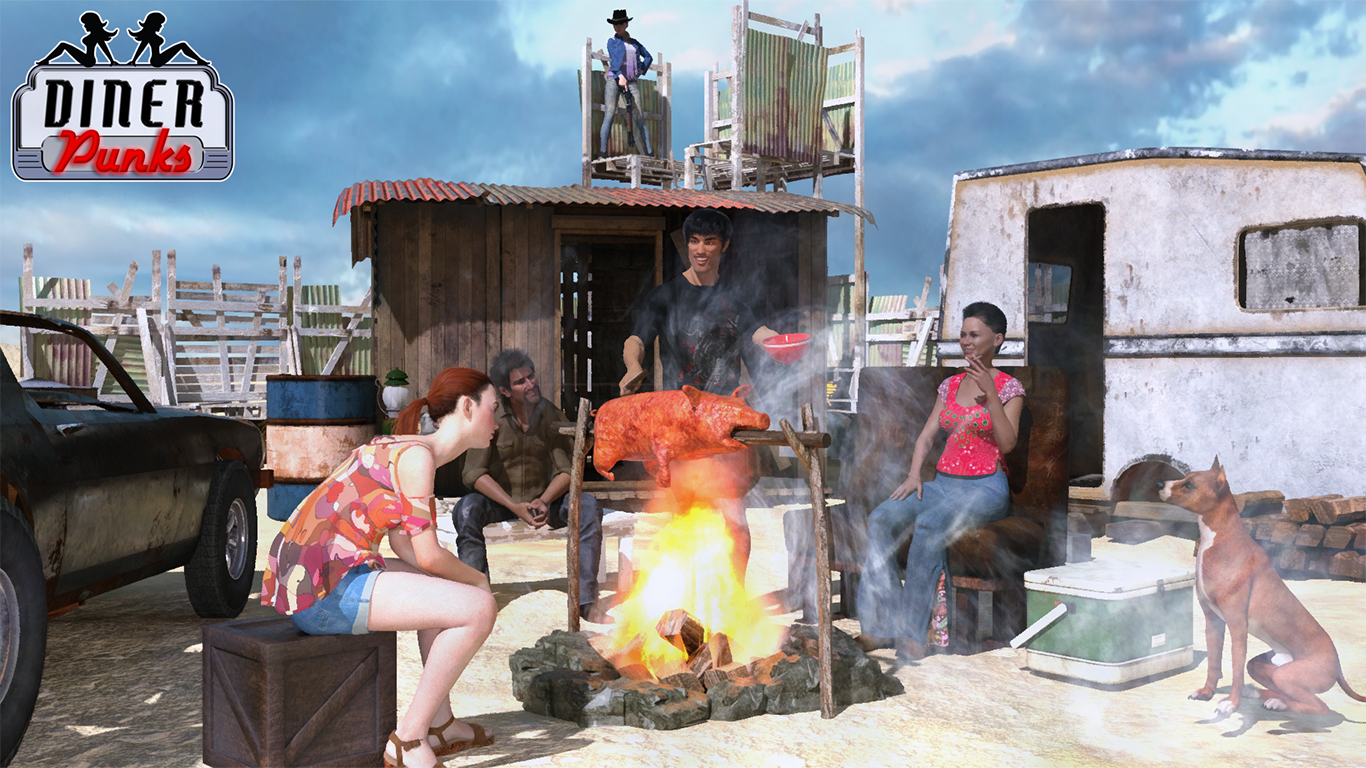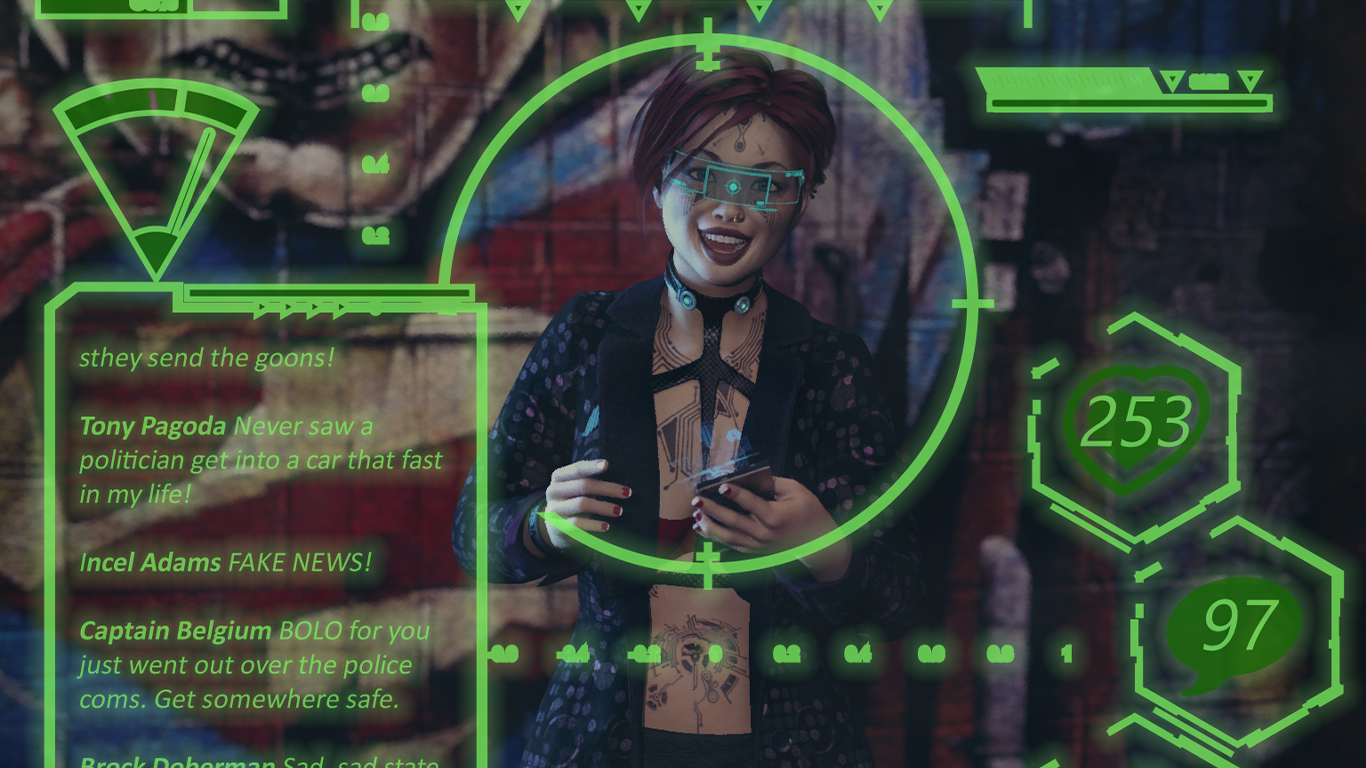We may earn money or products from the companies mentioned in this post.
When I redesigned the character stats for Cinemechanix, one thing I wanted to do was make the whole “Story” side of the sheet seem less like an afterthought, in part by including some kind of crunch to the story stuff. Role-playing and story mechanics are something I’ve never quite settled into a firm opinion on, in part because how well they work varies so much from one game to the next. I’ve seen them make the game and I’ve seen them break the game.
The Way I Actually Play part of me says that role-playing and story mechanics are completely unnecessary and sometimes even counterproductive because the best story and character bits are things that evolve naturally on-screen and can’t be planned or forced by rules. This is clear from anecdotal evidence and personal experience. The Game Designer part of me counters that I’ve been very fortunate to have spent most of my time role-playing with an exceptional group of players who are skilled at improvisation and characterization and have storytelling sensibilities that mesh well with my own, and that most groups are more likely to put effort into world building, storytelling, and characterization if there’s a mechanical component to them. This is also clear from anecdotal evidence and personal experience.
Since Cinemechanix is supposed to be a more “designed’ game (QAGS will always win when the points are made up and the rules don’t matter), I’ve ultimately decided to listen to the Game Designer, and it’s been tricky. The big problem is one I’ve run into over and over again for a long as I’ve been designing games: simplicity vs. detail. Part of my brain loves rules that model things in great detail and account for every possibility in a (comparatively) simple way, but that’s just the part of my brain that reads (and sometimes writes) rules. The part of my brain that actually plays games wants something quick and easy to grasp that the GM can modify on the fly to fit the situation at hand. Skill webs and pre-requisites and fine distinctions and situational rules often look great on paper, but they’re tedious as fuck when you actually try to use them during a game.
Through the various incarnations of the Cinemechanix character sheet, the recurring question has been “how many types of stats do I need?” Having more stat categories allows for finer definition of how different aspects of the character work, but they can also lead to unnecessary confusion and a sense that everything important has to be describe on the character sheet. In this case, the trick was to figure out how many mechanical categories (and, at least in theory, at least somewhat distinctive mechanics) I needed to cover the stuff on the story side of the sheet. I decided to start by assuming a one-for-one shift, with each distinct category or subcategory of story stuff translating to a new stat category. That immediately fell apart because the “Casting Call” and “Trivia” sections are purely descriptive in the first case and explicitly trivial in the second, and therefore don’t need mechanics. The handful of things from the Characterization section that might need mechanics, like cool props or a distinctive appearance, can already be achieved with existing rules (Edges, Hero Props, Drawbacks, etc). If you want your character to consistently get a bonus on comic book lore rolls, give him an Edge in “Comic Book Lore” rather than noting under trivia that he likes comics.
Technically that only left “Plot Devices,” but it was a section with a lot of different subcategories that included good stuff (like resources and allies), bad stuff (like problems and enemies), and stuff that could go either way (like a criminal record: useful for infiltrating a drug gang, not so useful when applying for a job). The defining characteristic was that it’s stuff that most affects how the story plays out more than how individual rolls are resolved. The original line of thinking was that plot devices expand or limit the character’s options rather than giving the player bonuses or penalties: A man with a tank in the barn has options that are not available to a man whose outbuilding is uncontaminated by armored fighting vehicles.
The beneficial plot devices–things like connections, allies, equipment, good reputation, and big piles of cash–seemed easier to deal with, so I started there. Just like in QAGS, Cinemechanix assumes that characters live the life of a typical fictional counterpart with the same general job and skill set: A private detective has a gun, a fedora, and an office with his name on the frosted glass of the door, a character with the “Computers” edge probably owns a computer, etc., and a vice cop has some criminal informants he can tap (or punch) for information. The resources available to a character are ultimately up to the GM, who can call for a roll if the answer isn’t obvious. The only other option is inventory management, which rarely leads to good fiction. That being the case, the only real reason to define resource plot devices is to “lock in” things that make sense for the character but don’t necessarily come with the membership kit (not everyone who knows how to skydive has their own gear) or to give the character atypical resources (maybe your small-time crook PC was the current mayor’s best friend growing up and can still rely on help from above when he gets caught).
If resource-type plot devices are going to have a mechanic attached to them, it makes sense for it to be a bonus. The only other option would be to essentially create a separate sub-system with specific modifiers and target numbers for each resource or resource group, which undermines the core mechanics. It also makes it easy to slip into trying to assign values to different resources, and that way lies Champions. I could try to come up with a special kind of bonus to separate resource plot devices from Edges, but unless they’re being bought from a separate pool of points (which I don’t like), there’s really no reason for it. The only possible argument I can think of against just rolling resources into Edges is that resources aren’t as consistently useful as standard skills, but (1) when have you known characters to choose a more limited option when a broader one costs the same? (2) with a “make up your own” skill system, that’s already an issue–they guy who chooses a skill in “American History” at least theoretically limits the application of his Edge more than the guy who just chooses “History.” For the most part the only time a player is going to choose a more limited option than he has to is if that option better describes the character he wants to play, which is a good thing. Last but not least, remember that in Cinemechanix the GM is supposed to treat the character’s stat choices as aspirational: If a player chooses a particular Edge or Resource, the GM should assume that the player wants the character to use it in the game, and should build stories that allow that to happen.
So yeah, if you want to “lock in” a resource so it’s less subject to GM fiat, just buy it as an Edge. That lets you access it unless the story makes it impossible and gives you a bump to your die roll as an added bonus. If it’s really important to the character, it’s worth the points. I might want to increase the number of points players get for Edges (or add new ways to get those points, possibly with the negative/neutral plot devices), but otherwise there’s no reason to separate resources from standard Edges. I just need to describe a few extra types of Edges in the character creation chapter, so along with things like “natural talents” and “training,” you’ll now have things like “wealth and equipment” and “connections.”
The negative and neutral plot devices are a little tricker. I’ll talk about those next time.






